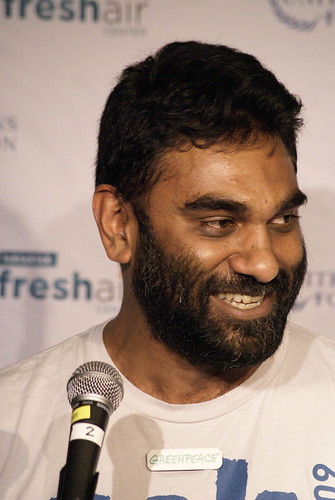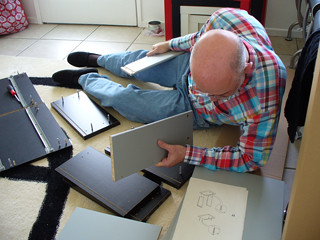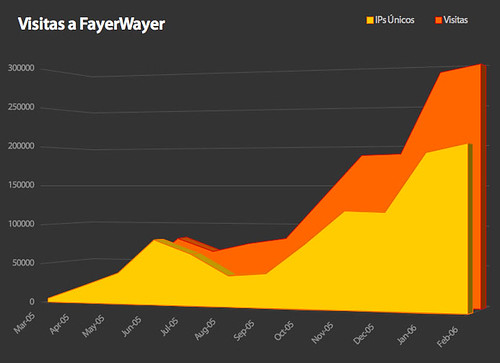
I spent the whole day today camped out at the Digital Media Lounge, because I think I have strep throat and schlepping all over town for press events was beyond my capacities. I had originally planned on attending a cookstove event, a global warming press conference, and the CGI keynote. Luckily, the Digital Media Lounge had some interesting stuff, so it wasn’t all that disappointing.
The highlights were the live broadcast of Obama’s Israel/Palestine speech, Rajiv Shah’s talk, and the absolute awesome president of Greenpeace. There was other stuff but those were the biggies.
Obama’s speech – it was a beautiful speech, beautifully delivered. But there was nothing new in it that’s going to move the needle on the situation. And this line “And efforts to threaten or kill Israelis will do nothing to help the Palestinian people,” is, unfortunately, demonstrably untrue. No one cared about the Palestinians until the intifada. Pretending otherwise isn’t going to win any supporters.
Rajiv Shah – we had to submit questions in writing and he picked which ones to answer. Not surprisingly, he didn’t pick any of mine. He stressed the expansion of the “core development community,” specifically mentioning Coca-Cola and young people who problem-solve. Rajiv Shah seems a little obsessed with innovation. It makes sense, since he comes from Gates, but I am not convinced it’s what USAID needs to focus on.
It also sounded to me like Shah is fully on board with the idea of development as a pillar of American foreign policy. I’m not opposed to that, but I also believe in development as a moral imperative. I wish I knew if he did too.
I live-tweeted Shah – you can see the tweets starting here.
Then we had the presentation from the unmovement people. It’s a social network that connect small NGOs and lets people learn about them and donate if they want. It’s supposed to help groups that don’t get social media tap its power anyway. I was fine with the whole thing until they mentioned that they don’t need to monitor or evaluate the NGOs because beneficiaries can just use the website to rate the projects and that’s how you’ll know if they are working.
Uh, NO. M&E is about way more than whether the beneficiaries like it. They communities you work with don’t necessarily know all your goals – they have better things to do than memorize your project objectives – and even really bad work can be popular with people, even if it’s wasting money and not doing much good. We need really M&E to make sure that we’re having the impact we want to have, and to show us how to adjust midstream if we don’t.
The, after a long, long wait in the auditorium, we had a presentation from Kumi Naidoo, the Executive Director of Greenpeace International. It was supposed to be a talk about how to meet the MDGs and protect the environment. It turned out to be a barn-burner of a rant that made it vividly clear how plastic most of this week has been.
He came out swinging – his first comment was that while he’s wholly in favor of reusing, this week had been nothing but recycled comments and baby steps. It was a great talk, and it left me feeling angry and vaguely inspired. My live tweets start here.
Disclosure: I attended UN Week as an Oxfam VOICE, which funded my trip as part of an effort to increase awareness of the MDGs.
+++++++++++
Kumi Naidoo at some other event. photo credit: wwf France







